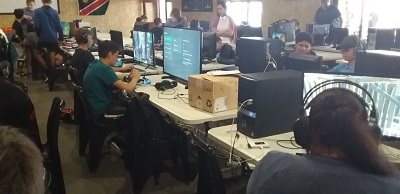
Payment trends to watch in 2022

There is an ever-increasing number of ways for consumers to pay for goods and services. Clinton Leask, Business Development Lead at Pay@ one of Southern Africa’s leading payment solutions providers, reflects on the trends that took shape in the payments space over the past year :
Of course, there has been an uptick in digital transactions as businesses adjust to changing consumer behaviour. This has been enhanced by the emergence of super apps over the course of 2021. A super-app is a mobile app that provides multiple services including payment and financial transaction processing, effectively becoming an all-encompassing self-contained e-commerce platform. The challenge, however, is that South Africa is still quite a cash-reliant society, and these apps leave out the unbanked and underbanked. Considering this, we believe cash payments via retailers will remain a strong trend in 2022 and years to come which means that bill issuers and merchants will need to continue providing a broad range of payment channels, both digital and physical.
In terms of tapping into the underbanked market, 2022 will see wallets from telcos such as VodaPay, MTN MOMO and Telkom Pay Digital Wallet going head-to-head with those offered by retailers like Shoprite Money, with a strong focus on digitising cash. These organisations are attempting to provide wallets that act like reduced capability bank accounts, but which one consumers will trust and use remains to be seen.
Looking at some of the other technologies that are gaining momentum, we have seen payments via QR codes becoming increasingly popular in the past year, with the banks now finally incorporating QR code scanners within their apps that are able to scan QR codes from Zapper, SnapScan or Masterpass wherever they are presented. We believe that the uptake will continue next year with further innovation from Visa and MasterCard looking to address card-not-present costs for QR code transactions and, consequently, wider use of QR codes. It has been a long journey for QR codes to finally break into the South African payments landscape, but we are now witnessing exponential growth in their use.
Another technology that has been accelerating and becoming the norm is contactless payments. People are becoming comfortable with tapping their cards, phones and smartwatches. Going forward, banks and other players in the industry will be coming out with apps for merchants which will enable them to turn their phones or tablets into point-of-sale (POS) tools, negating the need for pin-pad devices. Already we are seeing this type of tech with the likes of Nedbank’s PocketPOS and this is set to explode in 2022. We foresee this replacing POS machines used by smaller to medium businesses, much like the map apps on cell phones took the place of GPS navigation devices.
Banks have also been developing open payment Application Programming Interfaces (APIs). These are software intermediaries that allow two applications to talk to each other. The bank-developed open payment APIs allow users to pay directly out of their bank accounts while on a website without needing to go into their account and set up a predefined beneficiary or use their card. 2021 was the first year that banks put these APIs to test in the market and the use of this payment method will accelerate in the new year. While it will be used predominantly for e-commerce transactions, it will also start filtering into retail environments.
Linked to this is the development of a new and faster payment method called Rapid Payments by the Payments Association of South Africa (PASA), BankservAfrica and the banks which will be piloted in 2022, with market adoption expected in 2023. This will allow for money to be moved instantly from one’s account to another’s account or to that of a retailer. The vision for Rapid Payments is for users to be able to transfer money just by using the recipient’s cell phone number and for the money to be deposited into their account within as little as 10 seconds. Rapid Payments is expected to be a cost-effective payment method that banks will leverage as a tool to assist in digitising cash.
We are hoping to see even more innovation arising from the establishment of a new Payments Industry Body (PIB) comprised of banks, payment solutions providers like Pay@, fintech and other payment space participants.
“With these and other technologies coming to the fore, bill issuers and merchants are going to see money moving quicker and more cheaply. At the same time, it’s going to be safer and more convenient for the end consumer,” Leask concluded.











































